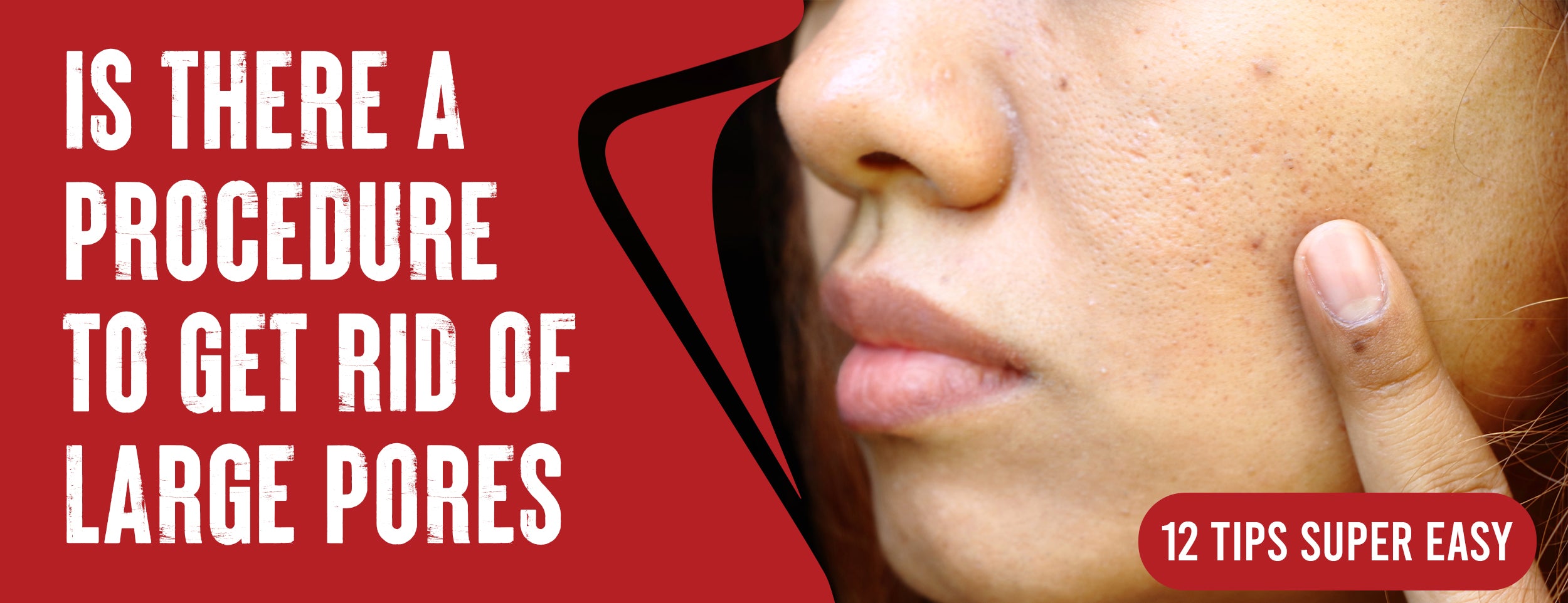Electrolysis can provide permanent hair removal. It's safe for facial hair removal and permanent hair removal on the rest of the body, with very few chances of growth in that area.
No permanent side effects. The cost for electrolysis can range anywhere from $30 to $200 per session, depending on several factors. Variables that can impact cost, such as location and number of sessions needed.
Electrolysis is an FDA-approved hair and root removal method that has been proven effective on all skin colors and hair types.
This blog post reviews the techniques used during electrolysis, its benefits, the number of treatments needed, potential side effects, cost, and proper preparation and aftercare.
Electrolysis for Hair and Root Removal: 2 Methods with Steps

Let's discover the process and techniques of electrolysis, the method used for removing hair and its roots. This effective hair removal technique targets the root to provide long-lasting results.
Method 1: Process of Electrolysis
The electrolysis process involves the following steps:
- Consultation: Before commencing the treatment, the electrolysis technician will conduct a consultation to determine whether electrolysis is the proper treatment for you. They will create a customized treatment plan to assess your skin condition, hair type, and medical history.
- Preparation: The technician will disinfect your skin, insert a sterile needle into the hair follicle, and apply a small electric current. This current passes through the hand into the hair follicle, damaging the root.
- Destruction of hair follicles: The electric current destroys the hair follicle's ability to regenerate, leading to hair growth cessation.
- Repeat sessions: Since electrolysis targets individual hair follicles, it requires multiple sessions to achieve permanent hair removal. The number of sessions varies depending on hair growth rate, density, and thickness, among other factors.
Method 2: Techniques Used in Electrolysis
Electrolysis techniques vary in effectiveness and efficiency. Different methods used for electrolysis are:
- Needle electrolysis: The traditional method uses a single needle to treat one hair follicle at a time. This method could be more time-efficient but is still very effective.
- Multi-needle electrolysis: This method uses several needles to treat multiple hair follicles simultaneously. This technique is much more time-efficient than the traditional method.
- Flash electrolysis: This method uses a high-intensity flash of light to destroy the hair follicle. This method is less painful and much faster than traditional electrolysis methods.
Hair and Roots are Removed by Electrolysis: 7 Benefits

Let's discover the benefits of electrolysis, a hair removal method that effectively targets both hair and roots. Experience lasting results and enjoy a smoother, hair-free appearance.
Permanent Hair Removal
Let's start with the most prominent and well-known benefit of electrolysis - it's permanent. Unlike other hair removal methods that only cut or pull the hair out, electrolysis destroys the hair follicles, preventing new hair growth for good. This means you can say goodbye to unwanted hair in any part of your body, including your face, underarms, bikini area, and legs.
Customizable Treatments
Every person's hair and skin are unique, so electrolysis treatments are highly customizable. Experienced and trained electrologists can adjust the current intensity, treatment timing, and probe size to suit your hair type and skin sensitivity. This ensures you get the best results while maintaining comfort throughout the session.
Safe and FDA-approved
Unlike some hair removal methods that can be risky, electrolysis is a safe and FDA-approved procedure. It has been used for over a hundred years and has a proven effectiveness and safety track record. Moreover, most electrologists follow strict hygiene and sterilization protocols to ensure the procedure is clean and risk-free.

Works on Any Hair Color and Skin Type
Electrolysis can remove hair effectively, whether you have dark or light hair or fair or dark skin. This is because the procedure targets the hair follicle rather than the hair or skin pigment. So, even if your hair is blonde or red or your skin is dark, you can still get great results from electrolysis.
Saves You Time and Money in the Long Run
While electrolysis sessions may cost more than other hair removal methods, like waxing or shaving, they can save you money and time in the long run. This is because electrolysis is permanent, and you won't need to buy razors, wax strips, or depilatory creams again. Plus, imagine the time you'll save not having to shave or tweeze every few days or weeks.
Elimination of Ingrown Hairs
It is common for ingrown hairs to occur after shaving or waxing. These hairs become trapped beneath the skin's surface, resulting in unsightly bumps and inflammation. Electrolysis eliminates the hair root, preventing it from becoming ingrown and providing a better solution for the problem.
Comparison to Other Hair Removal Methods
Compared to techniques such as waxing, shaving, and laser hair removal, electrolysis is the most reliable and permanent option. While laser hair removal provides similar permanency, it is not suited to all skin types. Additionally, waxing and shaving are temporary solutions that require frequent upkeep and can often result in ingrown hairs.
Treatment Factors & Typical Number of Electrolysis Treatments

It is essential to understand that electrolysis treatments may vary based on individual factors. Let's dive into the details below.
Identify multiple sessions
While every individual's experience will be different, some general guidelines can help to give you an idea of what to expect in terms of the number of electrolysis sessions:
- Small areas like the upper lip or chin may only require 4-10 sessions to complete the process.
- Larger areas, such as the back or legs, may take up to 30 sessions to remove hair.
- It is typical to schedule electrolysis sessions once a week or every two weeks, depending on the speed of hair growth and the amount of time required to treat the area.
It is worth noting that while electrolysis is a permanent hair removal technique, it may take several sessions to remove all hair from a given area entirely. Hair grows in cycles, so it is normal to experience some regrowth after a session. Over time, consistent electrolysis treatments will lead to a reduction in regrowth and eventually complete removal of unwanted hair.
Factors Affecting the Electrolysis Treatments
The following factors affect electrolysis treatments:

Hair Type
People with coarse and thick hair need more sessions than people with fine and thin hair. The density of the hair also plays a vital role in determining the number of treatments required as it determines the duration necessary to treat that area.
Skin Type
The skin is vital in determining the number of electrolysis treatments needed. For instance, people with fair skin and lighter hair are more responsive, and the treatment takes less time than people with darker skin types.
Treatment Area
The area where you want to remove hair also determines the number of electrolysis treatments required. For instance, larger sizes in your body, like the legs, back, or chest, require more sessions than smaller areas, like the face.
Hormonal Imbalances
Hormonal imbalances such as Polycystic Ovary Syndrome (PCOS) or thyroid disorders can also affect the number of electrolysis treatments you need.
Electrolysis Hair Removal: Pain Level and Techniques to Minimize Discomfort

The level of pain associated with electrolysis hair removal and the techniques used to minimize discomfort will be discussed.
Electrolysis Pain Levels
Electrolysis pain levels vary based on pain tolerance, skin sensitivity, and the treatment area. The sensation is often described as a hot prick, a quick pinch, or a mild sting. The procedure may also cause a slight tingling sensation in some people.
Electrolysis pain is often short-lived and only lasts for a few seconds. You may experience minor discomfort, but the benefits of hair-free skin may outweigh any discomfort.
Techniques to Minimize Discomfort
Here are some techniques to help minimize discomfort when undergoing electrolysis hair removal:
Numbing Creams: You can use numbing creams like lidocaine to minimize the discomfort you may experience during the procedure. Apply the lotion 30 minutes before your appointment to help manage the pain.
Ice: Applying ice to the treated area for a few minutes before the procedure can help numb the area and reduce pain.
Breathing Techniques: Controlled breathing can help you manage discomfort during the procedure. Deep breathing before and during electrolysis can help calm your nerves and relax your body.
Take a Break: If you feel uncomfortable or experience pain during the procedure, ask your electrologist if you can take a break to stretch or adjust your position.
Hair and Root Removal with Electrolysis: 6 Side Effects
We will explore the various side effects of electrolysis so that you can make an informed decision.
Redness and Swelling

One of the most common side effects of electrolysis is redness and swelling around the treated area. This is a normal skin reaction to the electric current passing through it. This should only last for a few hours after the treatment. If it persists for more than a day or two, it is advisable to consult a doctor.
Pain and Discomfort
Electrolysis can be painful, particularly for individuals with low pain tolerance. The electric current can cause a sharp, stinging sensation that can be uncomfortable. Most patients report that the pain is tolerable and not unbearable, especially when compared to waxing or threading.
Skin Discoloration and Scarring
electrolysis can lead to skin discoloration and scarring. This happens when the electric current is not administered correctly and a higher-than-recommended level is used. Individuals with darker skin tones are more likely to experience this side effect. Reputable electrolysis professionals are well-trained and use the correct level of electricity to avoid causing skin damage.

Infection
The use of needles during electrolysis increases the risk of infection, mainly if the equipment is not properly sterilized. Ensuring the electrolysis professional follows standard infection control protocols is crucial to avoid this side effect.
Allergic Reactions
Electrolysis can cause allergic reactions, particularly if the patient has sensitive skin. The chemicals used for sterilization and disinfecting can also cause allergic reactions.
Hyperpigmentation: Electrolysis can cause dark spots on the skin, known as hyperpigmentation. It occurs due to overproduction of melanin in the treatment area. This side effect is more common in people with darker skin tones.
Pallor and Bruising
A person undergoing electrolysis may experience whiteness and bruising in the treated area. This is due to the disruption of blood vessels during the treatment. This side effect is typically mild and resolves within a few days.
Hair and Root Removal of Electrolysis: After the Procedure

After the procedure, you may experience some common side effects, including:
- Immediately following surgery, you may experience redness and swelling. This is entirely normal and should subside in a couple of hours.
- You may also experience a slight stinging or burning sensation in the treated areas. You can apply an ice pack or aloe vera gel to soothe the skin.
- You should avoid exposing the treated areas to direct sunlight for at least 48 hours after the procedure.
- Avoid using scented products or harsh chemicals on the treated areas for a few days.
- Do not shave or wax the treated areas between appointments. Only clip the hair if necessary.
- It is vital to keep the treated areas clean and dry to avoid any infections.
- You can schedule your next appointment based on the guidelines provided by your electrolysis technician.
- Be patient with the results, and complete hair removal may take a few sessions.
Conclusion
If you're looking for a permanent solution to unwanted hair, look no further than electrolysis. By destroying hair at the root, electrolysis offers long-lasting silky smoothness. Not only is it safe and effective on all skin types, but it also eliminates the issue of ingrown hair.
Remember to consult with an experienced electrologist to determine the number of sessions required and proper aftercare instructions. With appropriate care, electrolysis can answer your hair removal needs.















![The Cost of Full Body Electrolysis: 4 Factors and 5 Costs [with 3 Alternatives]](http://drnumb.com/cdn/shop/articles/How_Much_Is_Full_Body_Electrolysis_4_Factors_Cost_Efficiency.jpg?v=1713417391)
![The 6 factors that cause scarring [7 tips to prevent and manage it]](http://drnumb.com/cdn/shop/articles/Does_Electrolysis_Cause_Scarring__5_Reasons_7_Prevention_Tips.jpg?v=1713357293)



